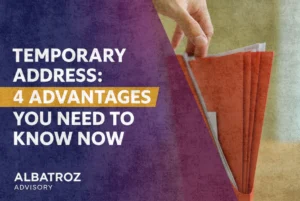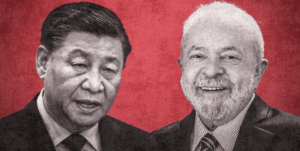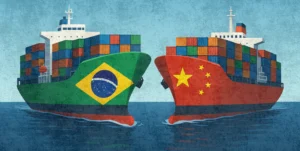Agribusiness & Food Products (Spices, tea, and processed foods) For...
Read More

Jota's blog
Where global markets, power politics, and international law collide to shape the world order
albatroz
Table of Contents
The Impact of the Mercosur-European Union Agreement on Domestic Industry
An Analysis of Adaptation Mechanisms and Trade Protection
The agreement between Mercosur and the European Union (EU), whose negotiations began in 1999 during the Latin America, Caribbean, and European Union (LAC-EU) Summit in Rio de Janeiro, was finalized almost 25 years later, with negotiations resuming in 2023. The opening of the European market to goods from the Global South represents a milestone in international trade relations, but it also raises concerns about the effects of tariff reductions on the domestic industries of the countries involved.
Contrary to the perception that such agreements produce immediate impacts, their implementation occurs gradually, with adaptation periods and trade defense instruments aimed at protecting national markets. This article examines the quantitative aspects of the agreement, tariff dismantling timelines, and safeguard mechanisms, analyzing their implications for industrial competitiveness.
The agreement between Mercosur and the EU covers a combined population of 718 million people and economies totaling approximately US$ 22 trillion, encompassing 27 European countries and 4 full Mercosur members (Argentina, Brazil, Paraguay, and Uruguay), in addition to 7 associated countries (which benefit from trade advantages but have no voting power).
The elimination of import tariffs will occur gradually, varying depending on the type of product, with transition periods that can extend from 0 to 15 years. This flexibility aims to allow sensitive industrial sectors to adapt to the new competitive reality.

Trade Defense Mechanisms
The agreement incorporates trade protection instruments commonly found in multilateral treaties, including anti-dumping measures, countervailing duties, and global safeguards. These mechanisms are designed to mitigate unfair trade practices and protect domestic industries from abrupt competitive shocks.
Anti-Dumping Measures
These are additional tariffs applied to imported products sold below fair market value (dumping), a practice that can cause significant harm to local producers. The imposition of these tariffs seeks to neutralize unfair advantages and preserve competitive fairness.
Countervailing Measures
These are taxes or restrictions imposed on imports that have received illegal subsidies in their countries of origin, distorting competition conditions in the importing market.
Global Safeguards
These are temporary measures (such as quotas or additional tariffs) implemented when a sudden increase in imports threatens domestic industrial sectors, regardless of whether unfair trade practices exist.
The Mercosur-EU agreement represents a significant opportunity for commercial expansion, but its implementation will require structural adjustments by the domestic industry. The gradual tariff dismantling timelines and trade defense mechanisms provide room for adaptation, reducing the risks of deindustrialization. However, the effectiveness of these measures will depend on the ability of governments and productive sectors to capitalize on competitive advantages and mitigate vulnerabilities.
Why Your Business Needs a
A temporary fiscal address is an officially registered location that...
Read MoreHow Chinese SMEs Can Benefit
The China-Brazil currency swap agreement offers a strategic advantage for...
Read MoreTop Challenges When Chinese SMEs
This guide highlights the key obstacles and how to overcome...
Read MoreAbout The Author
Jota Batista is the founder of Albatroz Advisory and the author of this blog. He writes regularly about international business, geopolitics, market entry strategies, and global risk management. Through his articles, Jota shares practical insights for companies looking to expand into Brazil, especially from emerging markets like China, India, and the UAE.
LinkedInEmail-me



